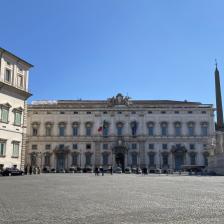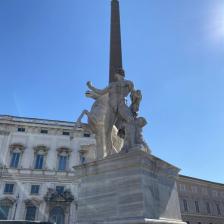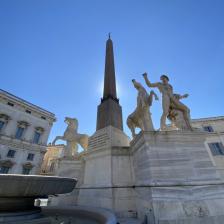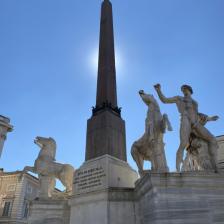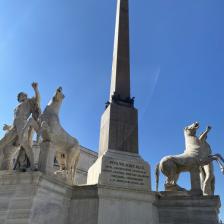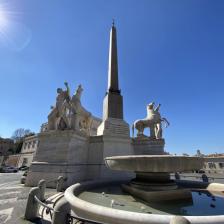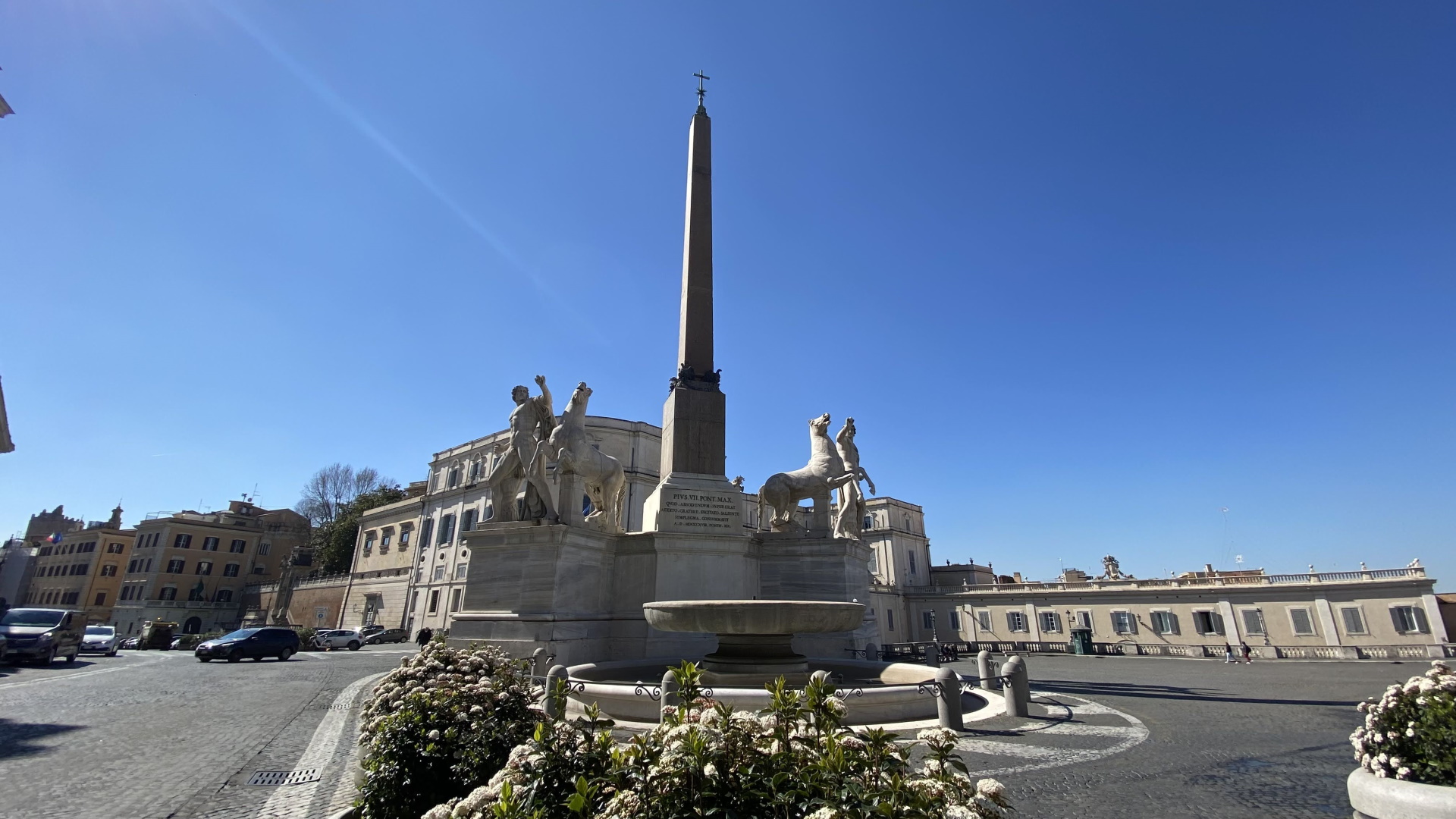
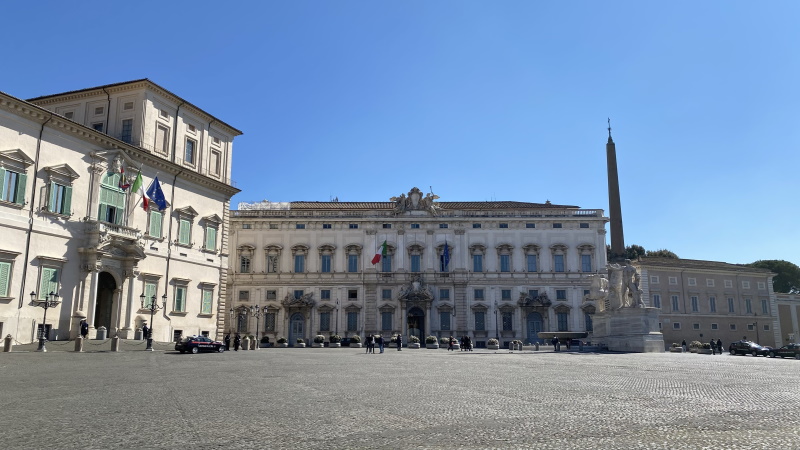
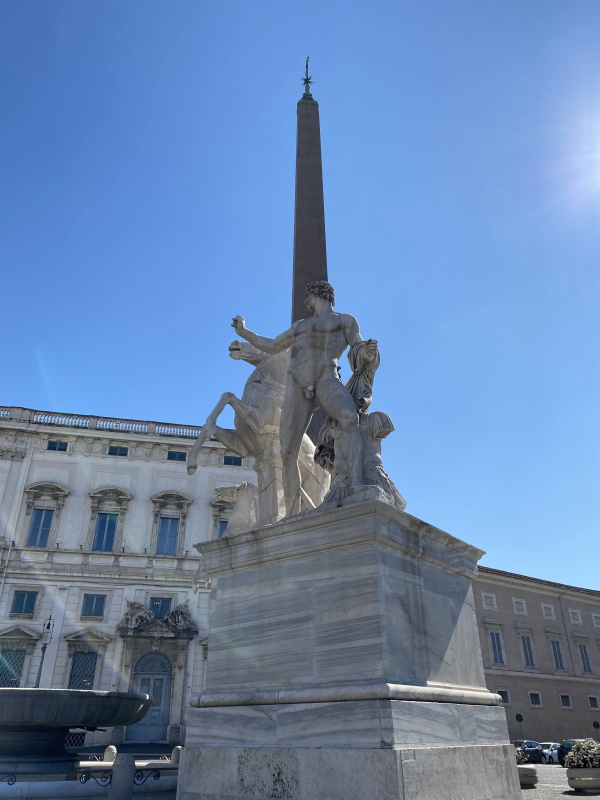
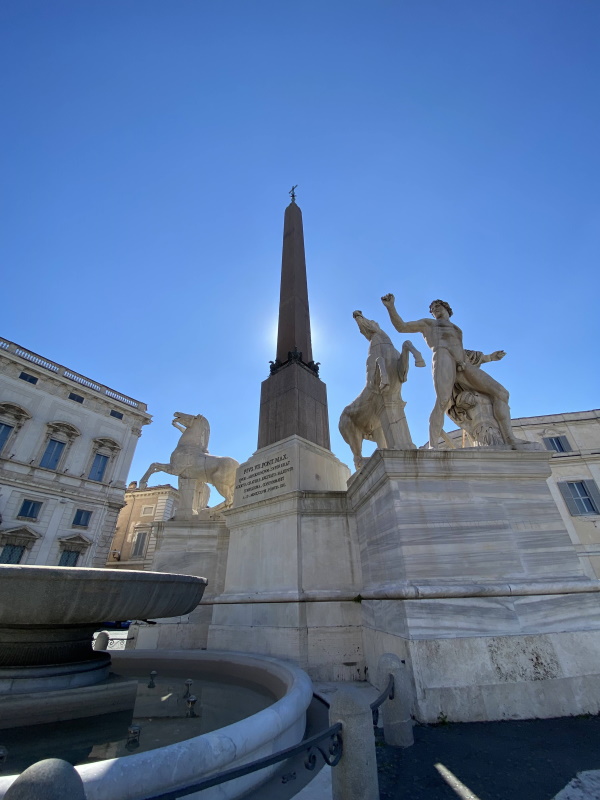
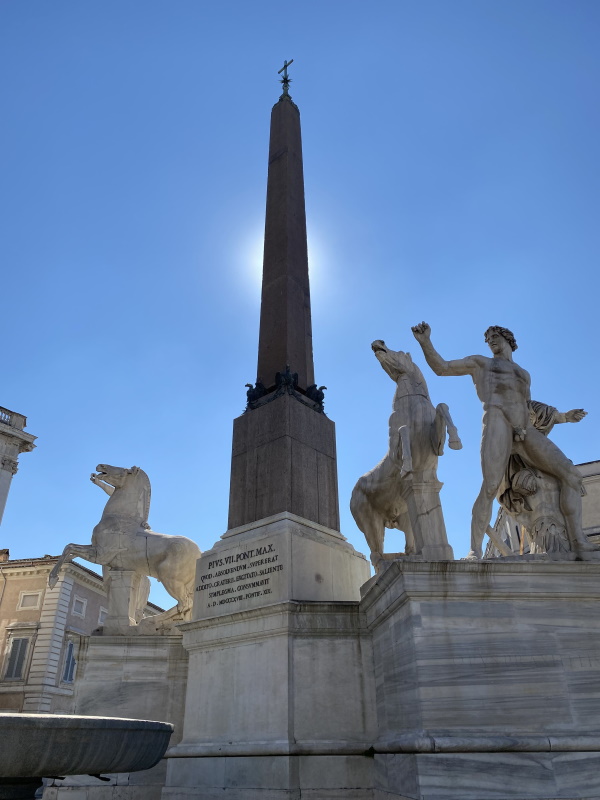
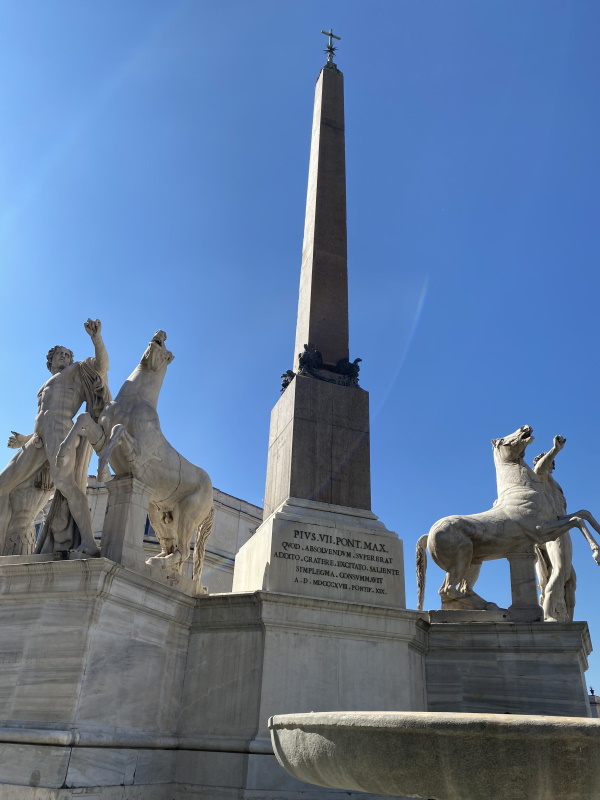
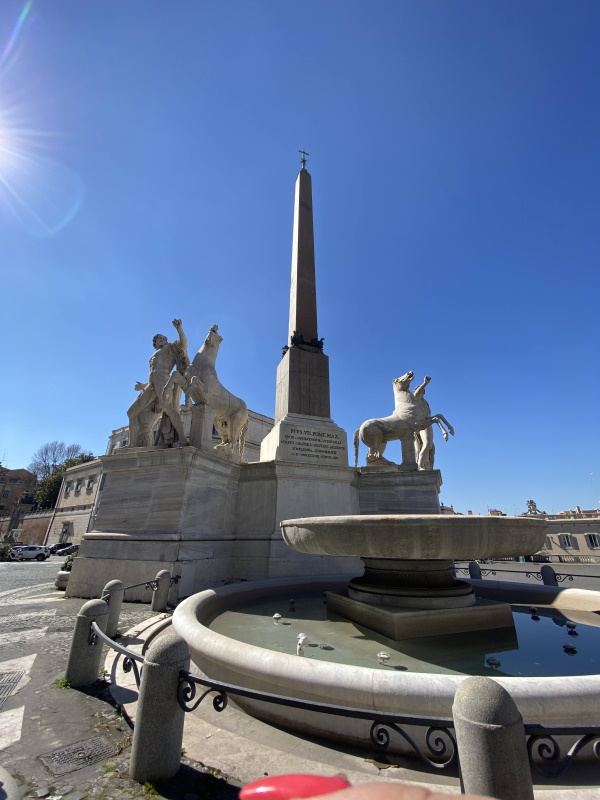
Similar to the Esquiline Obelisk - made of granite, about 15 metres high and without inscriptions - which stands on the square of the same name it suffered the same fate. With it, it was transported to Rome to adorn the Mausoleum of Augustus.
Discovered, together with the other one, for the first time around 1520 under Pope Leo X, unlike its twin which remained in the air for about 70 years along the public street before being placed in Piazza dell'Esquilino, this one was soon buried again. It was discovered a second time, around the middle of the 16th century, by Monsignor Francesco Soderini, who became the owner of the area and was authorised by the pope to excavate it. But it was buried again and remained so for about 150 years.
The last and final time it was discovered by chance in 1781, during work on the foundations of nearby buildings. Shortly after its discovery, Pope Pius VI decided that it should be re-erected among the sculptures of the Dioscuri - Roman copies of the 2nd-3rd century AD from Greek originals of the 5th century BC - in Piazza del Quirinale, a decision that was not initially well received by the citizens.
The whole restoration and rebuilding project, which was entrusted to the architect Antinori, took about five years. The base had to be completely redone, as the original had been destroyed. The work also involved rotating the two compositions with the Dioscuri, which did not happen on the first attempt, as in Antinori's project, causing a mass of witty remarks against the architect.
The last element added, in 1818, was the fountain composed with the granite basin that Giacomo Della Porta had originally placed in Campo Vaccino in the Roman Forum at the end of the 16th century.
Esquiline Obelisk
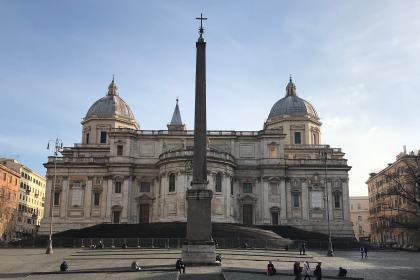
 Condividi
Condividi
The Quirinale Palace and square
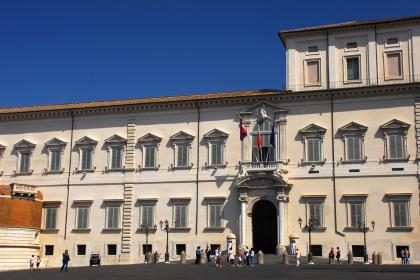
 Condividi
Condividi
The Scuderie del Quirinale
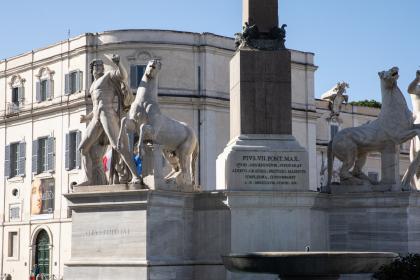
 Condividi
Condividi
Information
 Condividi
Condividi
Location
To find out about all accessibility services, visit the Rome accessible section.












































